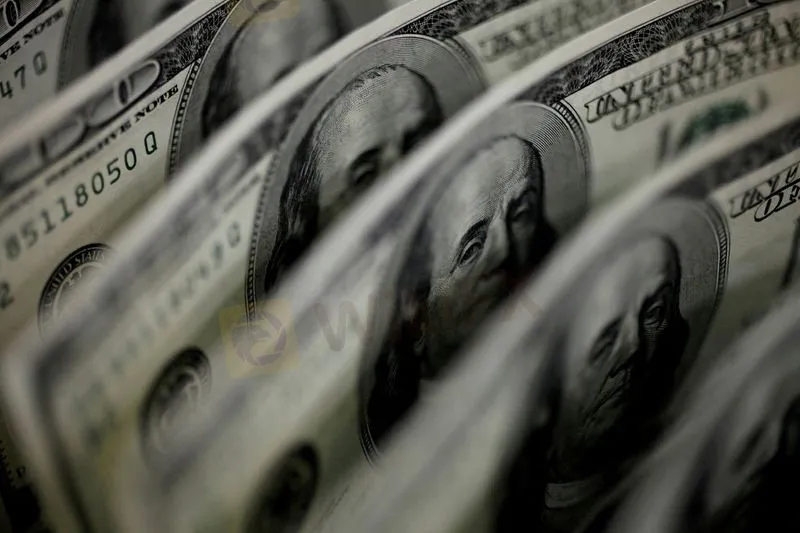简体中文
繁體中文
English
Pусский
日本語
ภาษาไทย
Tiếng Việt
Bahasa Indonesia
Español
हिन्दी
Filippiiniläinen
Français
Deutsch
Português
Türkçe
한국어
العربية
WIKIFX REPORT: U.S. yields advance as markets gird for midterm elections
Abstract:U.S. Treasury yields rose in choppy trading on Monday after a week of high volatility, as bond investors turned their focus to the U.S. midterm elections on Tuesday that will determine control of Congress.

U.S. Treasury yields rose in choppy trading on Monday after a week of high volatility, as bond investors turned their focus to the U.S. midterm elections on Tuesday that will determine control of Congress.
The past week saw market gyrations amid another big Federal Reserve interest rate increase and a strong U.S. jobs report for October that ensured the U.S. central bank will be in no rush to pivot away from its aggressive tightening of monetary policy.
U.S. two-year yields, which are sensitive to rate expectations, rose 7 basis points to 4.216%.
“Its all about the elections right now,” said Tom di Galoma, managing director at Seaport Global Holdings in Greenwich, Connecticut.
“If Republicans do take both houses, that will rally the stock market and that will include a rally in Treasuries. This has been the year when stocks and Treasuries have been rallying simultaneously,” he added.
Republicans have gained momentum in polls and betting markets, with analysts forecasting a split government in which Republicans win control of the House of Representatives and possibly the Senate. That result would likely hamper Democratic President Joe Bidens economic agenda.
A divided government could lead to gridlock over raising the federal debt limit, possibly reigniting worries about a U.S. default, analysts said, a scenario that may spur safety bids for Treasuries.
The yield on 10-year Treasury notes was up 4.3 basis points at 4.201%.
U.S. 30-year Treasury yields were up 4.2 basis points at 4.289%.
Investors are also looking to Thursdays U.S. inflation report for October. Wall Street economists expect a deceleration in both the monthly and yearly core consumer price index to 0.5% and 6.5%, respectively, according to a Reuters poll.
“Even though we see greater downside risks in October, we think it would be due to one-off factors that would likely reverse in the coming months,” PIMCO economists Tiffany Wilding and Allison Boxer wrote in a research note.
A closely-watched part of the U.S. Treasury yield curve measuring the gap between yields on two- and 10-year Treasury notes remained inverted at -52.1 basis points.
An inversion of this part of the curve typically foreshadows a U.S. recession.
The Treasury this week will auction $40 billion in U.S. three-year notes on Tuesday, $35 billion in 10-year notes on Wednesday, and $21 billion in 30-year bonds on Thursday. The $96 billion set of auctions will raise about $40.7 billion in new cash when they settle on Nov. 15, Jefferies wrote in a research note.
Disclaimer:
The views in this article only represent the author's personal views, and do not constitute investment advice on this platform. This platform does not guarantee the accuracy, completeness and timeliness of the information in the article, and will not be liable for any loss caused by the use of or reliance on the information in the article.
Read more

Risk Management: Turning Potential Into Profit
In Forex Trading, Without Effective Risk Management, You Risk Huge Losses and the Complete Depletion of Your Account.

Is it a good time to buy Korean Won with the current depreciation?
The exchange rate of the South Korean won in 2025 is expected to be highly uncertain, influenced primarily by the dual challenges of economic slowdown and political instability.

US Dollar Surge Dominates Forex Market
The global forex market continues to show volatility, with the U.S. dollar fluctuating last week but overall maintaining a strong upward trend. How long can this momentum last?

Oil Prices Soar for 5 Days: How Long Will It Last?
Last week, the global oil market saw a strong performance, with Brent crude and WTI crude prices rising by 2.4% and around 5% respectively. Oil prices have now posted five consecutive days of gains. But how long can this rally last?
WikiFX Broker
Latest News
Ghana Trader Jailed for $300K Forex and Crypto Scam
US Dollar Surge Dominates Forex Market
Hong Kong Police Bust Deepfake Crypto Scam Syndicate Involving $34 Million
Is it a good time to buy Korean Won with the current depreciation?
XRP Price Prediction for 2025: Will It Hit $4.30 or More?
Exnova Scam Alert: Account Blocked, Funds Stolen, and Zero Accountability
T3 Financial Crime Unit Freezes $100M in USDT
BlackRock Bitcoin ETF Outflows Hit $332M in Single Day
Terra Founder Do Kwon Denies Fraud Allegations in U.S. Court
Dr. Sandip Ghosh, Ex-RG Kar Principal, Involved in Multi-Crore Scam
Currency Calculator






